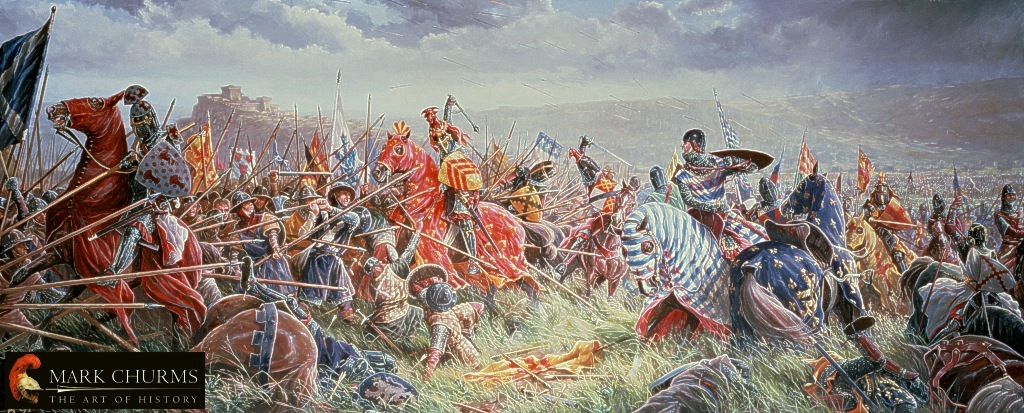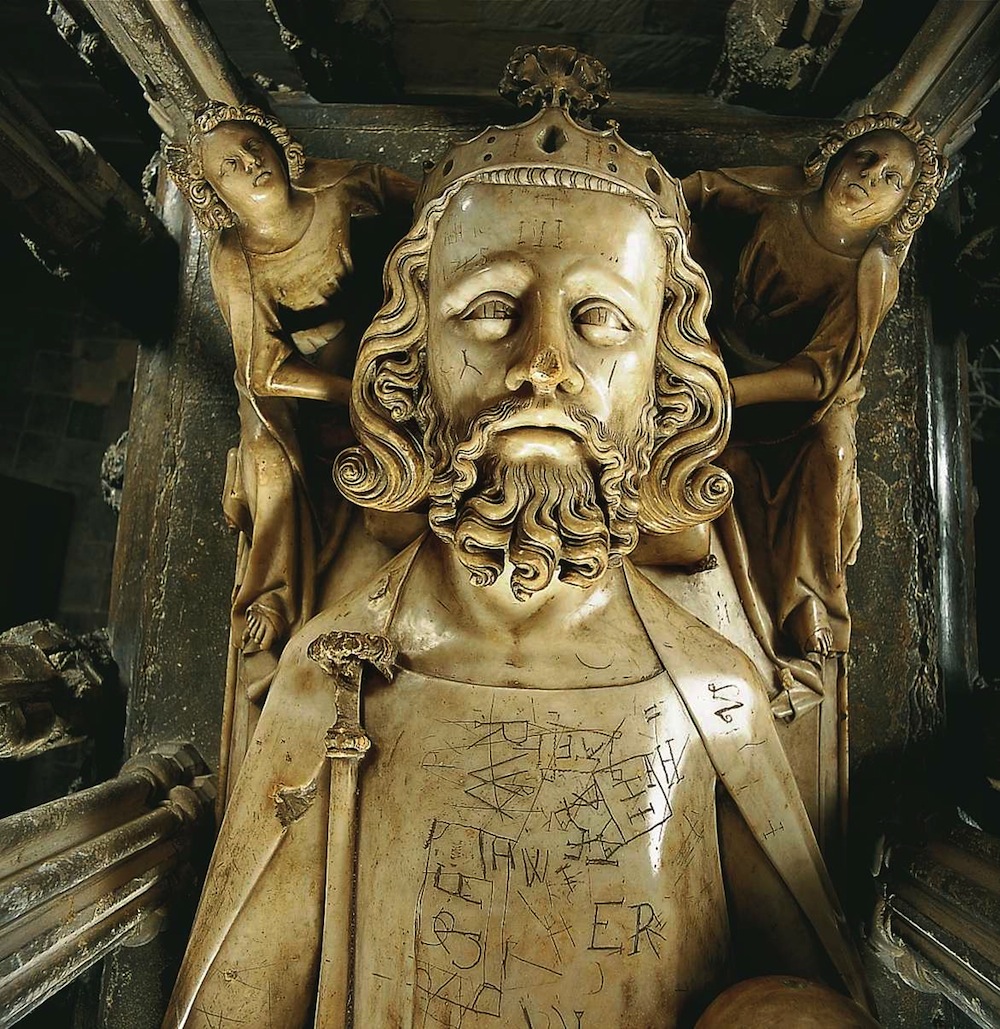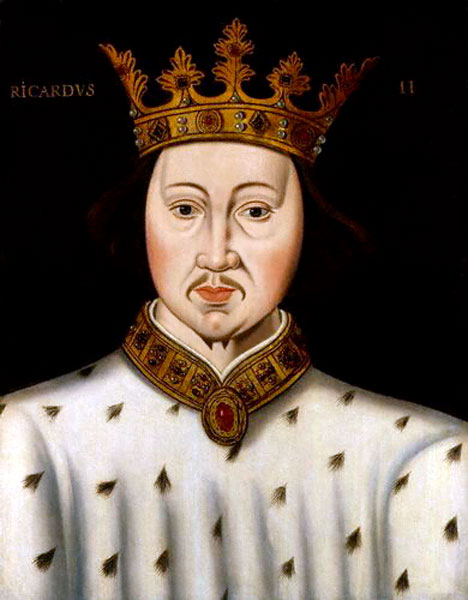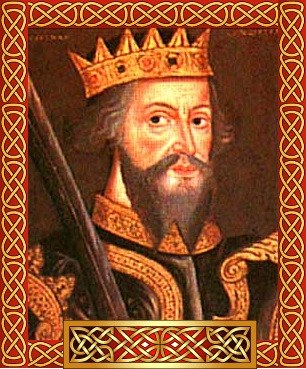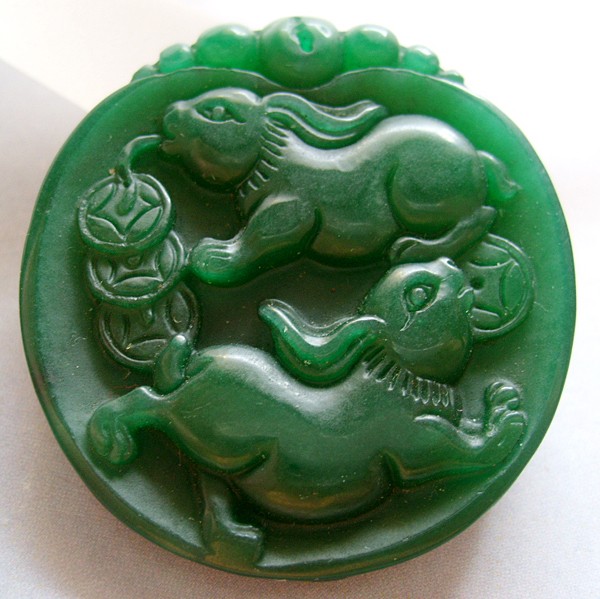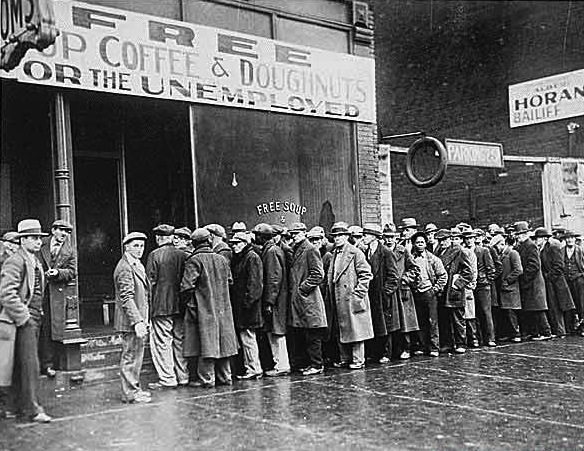Name: King Edward II
Born: April 25, 1284 at Caernarvon, Wales
Parents: Edward I and Eleanor of Castile
Relation to Elizabeth II: 18th great-grandfather
House of: Plantagenet
Ascended to the throne: July 8, 1307 aged 23 years
Crowned: February 25, 1308 at Westminster Abbey
Married: Isabella, Daughter of Philip IV of France
Children: Two sons and two daughters
Died: September 21, 1327 at Berkeley Castle (murdered), aged 43 years, 4 months, and 25 days
Buried at: Gloucester
Reigned for: 20 years, 2 months, and 14 days
Succeeded by: his son Edward III
King of England from 1307, son of Edward I. Born at Caernarfon Castle, he was created the first Prince of Wales in 1301. Incompetent and frivolous, and unduly influenced by his favourite, Piers Gaveston, Edward struggled throughout his reign with discontented barons, who attempted to restrict his power through the Ordinances of 1311. His invasion of Scotland in 1314 to suppress revolt resulted in defeat at Bannockburn. When he fell under the influence of a new favourite, Hugh le Depenser, he was deposed in 1327 by his wife Isabella (1292–1358), daughter of Philip IV of France, and her lover Roger de Mortimer, and murdered in Berkeley Castle, Gloucestershire. He was succeeded by his son, Edward III.
| Timeline for King Edward II |
| 1307 | Edward II accedes to the throne on the death of his father, Edward I. |
| 1308 | Edward’s favourite, Piers Gaveston, is exiled for misgovernment. |
| 1309 | Gaveston returns from exile in France. |
| 1310 | Parliament sets up a committee of Lords Ordainers to control the King and improve administration. The King’s cousin, Thomas, Earl of Lancaster, takes control |
| 1312 | Piers Gaveston is kidnapped by the King’s opponents and is put to death. |
| 1314 | Edward and the English army are defeated at the Battle of Bannockburn by Robert Bruce. Scottish independence is assured |
| 1320 | Welsh border barons, father and son, both named Hugh Despenser, gain the King’s favour, |
| 1320 | The Scots assert their independence by signing the Declaration of Arbroath |
| 1322 | Barons’ rebellion, led by Thomas, Earl of Lancaster, is crushed at the Battle of Boroughbridge in Yorkshire. |
| 1326 | Edward’s wife, Isabella, abandons him and with her lover, Mortimer, seizes power and deposes Edward. The Despensers are both put to death. |
| 1327 | Edward is formally deposed by Parliament in favour of Edward III, his son, and is murdered in Berkeley Castle on the orders of his wife, Isabella. |
1307-27
It has been said that Edward II was the great Edward I’s only failure. It is true to say that never was there a son less like his father. A thoroughly flawed jewel in England’s crown, he failed to live up to the country’s expectations of a son of the formidable Edward I, a hard act to follow.
Early Life
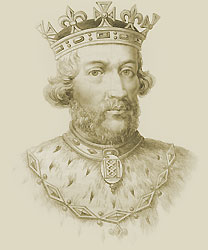 Edward had been born at Caernarfon Castle on St. Mark’s day, 25th April, 1284, the fourth son of Edward I and his first wife Eleanor of Castile. The death of his older brother, Alphonso, a short time later, made the four month old Edward heir to the throne. His mother died when he was five.
Edward had been born at Caernarfon Castle on St. Mark’s day, 25th April, 1284, the fourth son of Edward I and his first wife Eleanor of Castile. The death of his older brother, Alphonso, a short time later, made the four month old Edward heir to the throne. His mother died when he was five.
At the age of sixty, his father remarried in 1299, to Margaret of France, the seventeen year old sister of Phillip IV. His father’s new wife was only two years older than himself. Edward became fond of his new stepmother, whom he is recorded as presenting with a gold and ruby ring and she often interceeded for him to avert the wrath of his stern father. On 7th February, 1301, at a Parliament held at Lincoln, Edward was created the first English Prince of Wales by his father.
Edward was a tall, strong and handsome youth who loved music and acting. He was homo-sexual and became excessively devoted to a succession of favorites. King Edward I had banished Edward’s lover, Piers Gaveston, in an outburst of Plantagenet rage, “on account of the undue intimacy which the young Lord Edward had adopted towards him.” in an attempt to curb their relationship. The younger Edward had asked his father to bestow the title of Count of Ponthieu on his lover. Edward I, irate at the fact that Edward “had an inordinate affection for a certain Gascon knight”, is said grabbed a handful of his son’s hair, and pulled it out. The king threatened to disinherit his son, even going as far as to question the chastity of his beloved Queen, Eleanor of Castille.
Reign
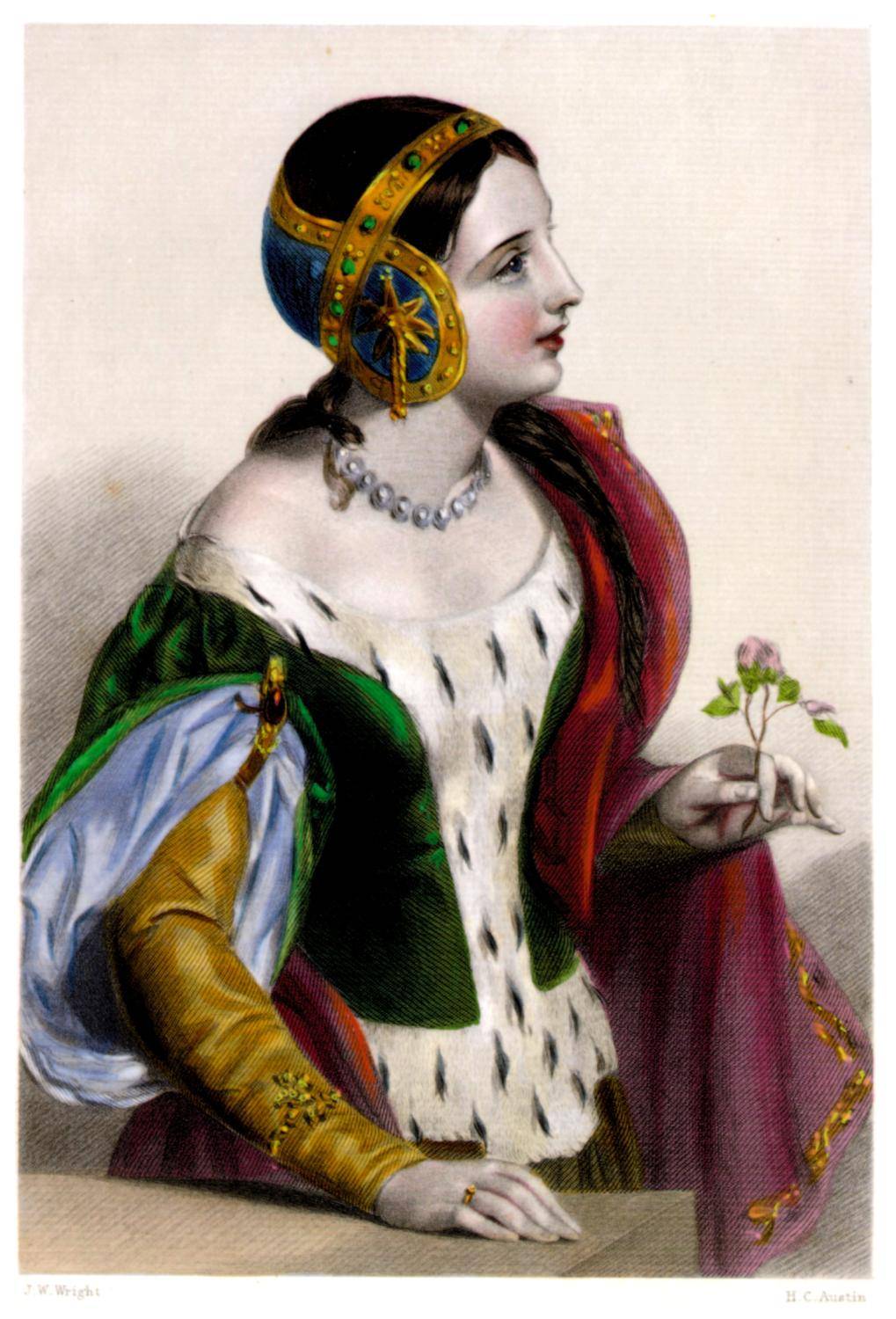
Mother: Joan I of Navarre
Father: Philip IV of France
Queen consort to: Edward II of England (1284-1327?, ruled 1307, deposed 1327 by Isabella)
Married: January 25, 1308
Coronation: February 25, 1308
Children: Edward III of England; John, Earl of Cornwall; Eleanor, married Reinoud II of Guelders; Joan, married David II of Scotland
Isabella turned against her husband over his apparent affairs with several men; she was a lover of and fellow conspirator with Roger Mortimer in his rebellion against Edward II whom they deposed. Her son Edward III rebelled against Mortimer and Isabella’s rule, executing Mortimer and allowing Isabella to retire. Isabella was called the She-Wolf of France. Three of her brothers became King of France. England’s claim to the throne of France through Margaret’s lineage led to the Hundred Years War.
King Edward II’s inglorious reign began in 1307. One of his first acts as King was to re-call Piers Gaveston. The following year, Edward married the twelve year old Isabella of France, the daughter of Phillip IV by Jean of Navarre. He gave all the best jewels, received as wedding presents, to Gaveston, thereby grossly offending his bride. Although the marriage produced four children, two sons, the future Edward III and John and two daughters, Eleanor and Joanna, Edward continued in his addiction to homo sexual favourites. To the chagrin of his neglected Queen, Gaveston was showered with favours and made Earl of Cornwall. He added to his growing unpopularity by insulting and ridiculing some of the most powerful barons, he called the Earl of Warwick the ‘black hound of Arden’, ‘Let him call me“hound”,’ the earl is said to have commented, ‘One day the hound will bite him.’ The king liked to dress like his friend Piers, Edward’s relationship with Gaveston referred to as ‘the sin against nature’ was usually mentioned indirectly, with comparisons to the Old Testament love of King David for Jonathan, ‘a love beyond the love of women’.
The Battle of Bannockburn
While Edward dallied with Gaveston Robert the Bruce set about regaining the kingdom of Scotland. Edward lead an army north in 1314 in attempt to halt his advance. They met on Midsummer Day, 22 June, at the Battle of Bannockburn, near Stirling. The encounter was to go down as one of the most resounding defeats in English history.
The encounter begun when Henry de Bohun famously charged alone against Robert the Bruce and was killed by an axe blow on the head by the Scottish king. The English army were hemmed in to a tight space between the River Forth and the Bannockburn. The Scots bore down on them and routed Edward’s army, inflicting a devastating defeat, many were killed whilst fleeing. The King of England himself was forced into an humiliating flight back to England with the Scots hard at his heels. Edward was turned away from Stirling Castle and fled in haste to Dunbar from where he managed to obtain a boat back to England.
The Battle of Bannockburn
The new English King, the ineffectual Edward II, a pale shadow of his resolute father, responded belatedly by marching his forces into Scotland to meet Robert the Bruce. The two armies faced each other at the fateful battle of Bannockburn, near Stirling, on 24th June, 1314.
Edward II, said to be the great Edward I’s only failure, was not the cunning military leader and general that his father had been. Although outnumbered three to one, the Bruce prepared for the impending battle carefully. The English would approach along the Roman road to Stirling crossing the Bannock Burn. Robert ordered pits to be dug beside the road. The Scottish army was then laid out in four groups using the lie of the land to its best advantage, to confine the vast English army within a very limited space.
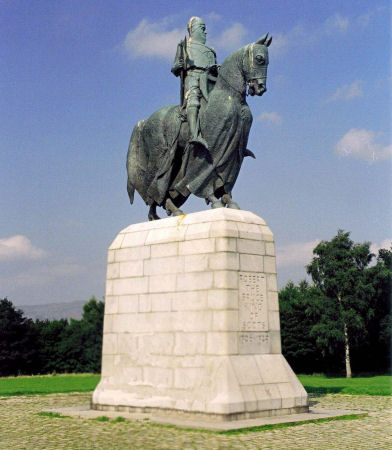 On the morning of the battle, the Scots advance was lead by the King’s brother, Edward Bruce. Walter the Steward and Thomas Randolph controlled the left, with Bruce and the Highlanders closely in the rear.
On the morning of the battle, the Scots advance was lead by the King’s brother, Edward Bruce. Walter the Steward and Thomas Randolph controlled the left, with Bruce and the Highlanders closely in the rear.
In the first encounter of the battle which was to be ever after renowned as Scotland’s most famous victory, took place on the old road on Sunday, 23rd June. Sir Philip Mowbray, the commander of Stirling Castle, who had watched Bruce’s preparations on the road, arrived at Edward II’s camp early in the morning and warned the English king of the dangers of approaching the Scots directly through the New Park, but it was already too late. The vanguard under the Earls of Gloucester and Hereford were already marching on the Scottish army from the south. Following the line of the Roman road, they crossed the ford over the Bannockburn towards Robert’s division at the opening of the New Park.
One of the first of the English knights to arrive at Bannockburn, Henry de Bohun, nephew of the Earl of Hereford, sighted the figure of the King of Scots on a highland pony, battle-axe in hand. Enthusiastically hoping to cover himself in glory, de Bohun seized the moment and charged. The Bruce sat motionless and calm until the point of Bohun’s lance was only feet away, then he pulled his horse quickly aside and delivered a shattering blow which suceeded in carving both de Bohun’s helmet and skull in two. This pre-battle encounter and Bruce’s bravery has become legendary. On returning to his army, he complained that he had broken the shaft of his “good battle-axe” on Bohun’s skull.
Heartened by the encounter, Bruce’s division engaged the main English force. Fierce fighting ensued, during which the Earl of Gloucester was unhorsed, after which the knights of the vanguard were forced to retreat to the Tor Wood. Another English cavalry force under the command of Robert Clifford and Henry de Beaumont skirted the Scottish position to the east and rode towards Stirling, advancing as far as St. Ninians. The Bruce saw the manoeuvre and ordered Randolph’s schiltron to intercept them. The English cavalry horsemen failed to overpower the Scots spearmen and the English squadron was broken.
On the second day of the battle, fought on 24th June, the English army was still approaching Stirling from the south as Bruce’s preparations had made the direct approach to Stirling too hazardous. Edward ordered the army to cross the Bannockburn to the east of the New Park. Soon after daybreak, the Scots spearmen advanced on the English. As the Scots drew nearer, they halted and knelt in prayer. Edward II is said to have exclaimed “They pray for mercy!” “For mercy, yes,” one of his attendants replied, “But from God, not you. These men will conquer or die.” Gloucester, asked the king to hurry, at which Edward accused him of cowardice. Infuriated, Gloucester led a charge against the leading Scots spearmen, under Edward Bruce.He was killed in the forest of Scottish spears, along with some of the other knights.
Bruce then issued orders for the whole Scots army to advance into a bloody push against the disorganised English mass, fighting side by side across a single front. the English were now so tightly packed that if a man fell, he risked being immediately crushed underfoot or suffocated, the English and Welsh longbowmen could not fire for fear they would hit their own men. After a while they moved to the side of Douglas’s division and began firing into its left, but the Scottish cavalry dispersed them. The fleeing archers then caused the English infantry to begin to flee.
Later the knights also began to flee back across the Bannockburn. As the English formations beginning to break up, a great shout was heard from the ranks of the Scots army, “Lay on! Lay on! Lay on! They fail!”. Bruce’s camp followers then charged forward. The English mistook this for a fresh reserve and abandoned all hope. The English forces north of the Bannockburn fled. Some attempted to cross the River Forth where most drowned, others tried to retreat across the Bannockburn, they were pursued by the exultant Scots, and mass slaughter ensued, many died in the Bannock burn which was now ran red with blood, congested with the corpses of English dead.
On realising continued resistance was futile, Edward II, guarded by a company of knights, fled towards Stirling, but the town refused to admit him. The King of England was forced into a hasty and ignominious flight to Linlithgow. He finally made it back across the border to safety, but had been thoroughly humiliated. The rest of the English army tried to escape to the safety of the border, which lay ninety miles to the south. Many were killed by the pursuing Scottish army or by the inhabitants of the countryside that they passed through.
Robert the Bruce had won a famous and resounding victory and was now the incontestable King of Scotland.
The Rebellion of Isabella ‘the She – Wolf of France’
A coalition of barons, known as the ‘Ordainers’ rose in rebellion against Edward. He was forced to sign ‘Ordinances’ to govern England better. Guy de Beauchamp, Earl of Warwick and the King’s half-brother, Thomas, Earl of Lancaster finally brought about Gaveston’s death on 19 June, 1312. Edward, distraught, had little choice but to accept the situation, but smoulderingly resentful, he vowed he would be avenged upon them.
Edward, having learnt nothing from past events, acquired a new favourite, Hugh Despencer. Despencer and his father, also Hugh, two great Marcher lords, were anathema to the barons who brought about their banishment in 1321. The king struck back the following year, when he captured and executed his arch-enemy and cousin, Henry of Lancaster and re-called the Despencers.
His deeply insulted Queen, Isabella, was sent on a mission abroad to do homage to her brother the French King for England’s French possessions. There she plotted against her despised husband with her lover, Roger Mortimer, Earl of March.
Her actions deeply shocked her brother the French king and the pair were obliged to move on to Hainault. In negotiations with William, Count of Hainault it was agreed that Isabella’s son, the young Edward, should marry the count’s daughter Phillipa in return for armed support of Isabella’s rebellion. On 24th September 1326, Mortimer and Isabella, the She-Wolf of France as she was known to contemporaries, invaded England. They were joined by many of the country’s dissatisfied nobles.
Edward failed in an attempt to rally London and fled but was captured and forced to abdicate in favour of his fourteen year old son, Edward. The hated Despencers were promptly executed. landing at Orwell on the east coast, they were joined by many disaffected nobles, including Thomas, Earl of Norfolk and Henry of Lancaster . Edward fled from London, Isabella and Mortimer besieged Bristol, which was being held for the king by Hugh de Despenser the Elder. When the city fell, Isabella recovered her daughters Eleanor and Joan, Despenser the Elder was executed by his Lancastrian enemies, his body was hacked to pieces and fed to the local dogs.
A huge crowd gathered to see Hugh Despenser the Younger die. They dragged him from his horse, stripped him, and scrawled Biblical verses against corruption and arrogance on his skin. He was then dragged into the city, and condemned to be hung, drawn and quartered. Decapitated remains, uncovered at Hulton Abbey, in Staffordshire during the 1970’s are said to those of Despencer. The skeleton had been beheaded and chopped into several pieces with a sharp blade, there was also evidence of a stab wound to the stomach. Carbon dating of the Hulton Abbey skeleton indicated that death occured no later that 1385.
Edward II was imprisoned firstly at Kenilworth and later removed to Berkeley Castle in Gloucestershire in January 1327, Thomas de Berkeley and Sir John Maltravers were appointed the ex-king’s custodians. He was placed in a dungeon, into which was thrown filth and rotting animals, in the hope that he would contract some form of disease and die, thus removing from his captors the responsibility for his murder, but Edward, an extremely fit man, continued to doggedly survive this treatment.
According to accepted belief, Edward was murdered in a bestial manner on the orders of Mortimer and Isabella on around 11th October, 1327. A red hot poker was inserted into his entrails by means of a horn, to leave no outward marks on his body. The people of Berkeley were said to have heard the agonised screams of the dying king outside the castle. This acount of how Edward met his death is not however, corroborated by any contemporary source and none of the directly contemporary chroniclers recorded with certainty how Edward II met his end, often citing suffocation or strangulation as the likely cause. The accepted version of Edward’s horrific murder was first made public in the mid 1330’s.
Edward was interred at Gloucester Cathedral, the funeral was attended by Isabella and the new king, the fourteen year old Edward III.
According to the Fieschi Letter written to Edward III in around 1337 by Manuele Fieschi, a Geonoese priest of Avignon, later Bishop of Vercelli, which was discovered in the ninetenth century at Montpellier, Edward escaped his jailors and lived out the remainder of his life in monastic hermitages near Milan.The letter pre-dates accepted accounts of Edward’s brutal murder. The authenticity of the Fieschi letter is not doubted, its motives, however are.
The posthumous reputation of Edward II
Edward III , who was said to have been attached to the memory of his father, felt troubled in his conscience at the part he had been made to play in his overthrow and later commissioned a magnificent memorial effigy for his tomb.
The tomb of Edward II at Gloucester Cathedral
He and his Queen, Phillipa of Hainault visited the tomb as pilgrims. Setting an example that was followed by his son, Edward, the Black Prince and Edward II’s daughter, Joan, Queen of Scotland. Edward III’s grandson, Richard II, made unavailing efforts to have his great-grandfather canonized. The cult of Edward II, which had grown up around his tomb at Gloucester, continued until the Reformation.
Credits:
Wikipedia
http://www.britroyals.com/
http://www.englishmonarchs.co.uk/


